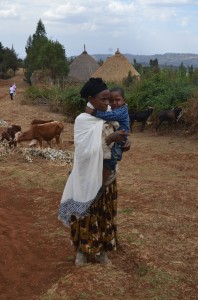Empowering People and Protecting the Environment: Putting PHE in Place
Aug 6th, 2013 | By admin | Category: Environment/Sustainability, FeaturedBy Suzanne York, www.howmany.org
Confronted with so much grim news 24/7 – severe droughts and floods, poverty, loss of biodiversity, and much, much more – people are understandably hungry for something positive.
Fortunately, there are some dedicated organizations and government agencies working to improve peoples’ lives and natural environment via an approach linking issues that offer help and hope for communities around the world.
It is a holistic approach that integrates population, health, and environment issues, known as PHE programs or initiatives. What makes PHE so exciting is that it is a multi-sector approach to enable people and communities to overcome the many challenges they face in their daily lives, from high population growth rates to unemployment to severe environmental degradation.
The potential of the PHE approach is addressed in the recently released briefing paper “Prioritizing the PHE Approach: Linking Population, Health and the Environment for a Better World” by the Institute for Population Studies.
PHE Defined
The U.S. Agency for International Development (USAID) defines PHE initiatives as:
Population, health and environment (PHE) projects acknowledge and address the complex connections between humans, their health, and their environment. The key objective of these projects is to simultaneously improve access to health services while also helping communities manage their natural resources in ways that improve their health and livelihoods and conserve the critical ecosystems they depend upon.
A growing global population (especially in Sub-Saharan Africa), increased environmental pressures, and continued poverty and inequality are all impediments to advancing society and creating healthy communities and environments. Innovative approaches such as PHE are greatly needed to overcome the many challenges the world faces today.
The Components of PHE
- Population: the United Nations’ report World Population Prospects: The 2012 Revisions states that the current world population of 7.2 billion is projected to increase by 1 billion over the next 12 years and reach 9.6 billion by 2050.
- Health: access to healthcare and voluntary family planning services is especially critical for women. Globally, 222 million women want to use contraceptives but lack access. Addressing this need, reducing the rate of maternal and child mortality, and pre and post-natal care should be priorities for any country.
- Environment: the world is facing incredibly serious natural resource and environmental challenges. Often the best solutions to environmental problems are local and based on traditional knowledge.
An additional “E” or two could be added for educational and employment opportunities, which are already incorporated into PHE work.
PHE projects are most desirablein areas of threatened ecological/biological landscapes and places where population density results in ecological pressure, demographic, health and/or poverty indicators are relatively worse than regional/national indicators, and government services are nonexistent or insufficient.USAID supports PHE projects around the world. These include projects in Ethiopia, Rwanda, Tanzania, Uganda, Madagascar, the Philippines, Nepal and Cambodia.
Pressing Need for Integration
Jeffrey McKee, an anthropologist with Ohio State University, published a study this past June in which he and other researchers found that continued population growth could potentially threaten hundreds of species with extinction within the next 40 years. He may or may not be aware of the PHE approach, but his study reflects the need to address critical issues together; “You can do all the conservation in the world that you want” McKee said recently, “but it’s going to be for naught if we don’t keep the human population in check.”
We should be doing all that we can to ensure people have the education, sustainable livelihoods, and the family size they want in order to improve the well-being of their families and the planet. PHE is one approach with the potential to do just that.
Suzanne York is a senior writer with the Institute for Population Studies.


